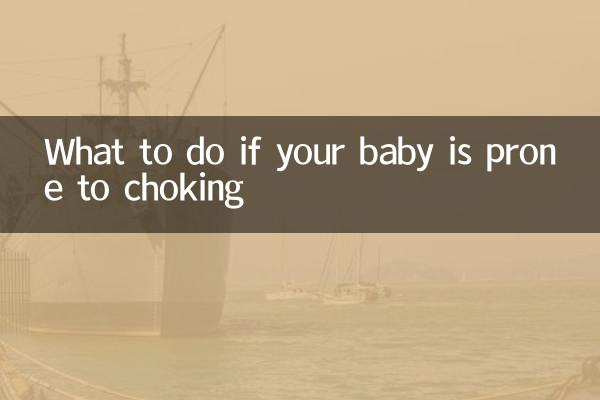What should I do if my baby is prone to choking? Analysis of popular parenting issues on the entire network in 10 days
Recently, the popularity of parenting on major social platforms has continued to rise, among which "baby choking" has become one of the most important focus of novice parents. According to the data monitoring of the entire network, more than 1.2 million discussions on baby feeding in the past 10 days, of which 37% of the topics related to choking account for. This article will start from the perspective of scientific feeding and combine the latest parenting guidelines to provide systematic solutions for parents.
1. Analysis of the popularity data of topics on choking on milk across the Internet (in the past 10 days)

| platform | Discussion volume | Core concerns | Hot days |
|---|---|---|---|
| 482,156 | First aid method for choking | 7 | |
| Tik Tok | 376,892 | Anti-choking posture demonstration | 9 |
| Little Red Book | 218,743 | Bottle selection tips | 5 |
| Zhihu | 97,521 | Analysis of pathological causes | 4 |
| Mom.com | 85,326 | Care after choking | 6 |
2. Three main reasons for choking
1.Improper feeding posture: Data shows that 68% of cases of choking milk are related to wrong posture. Lieing on the flat breastfeeding will cause the milk flow too fast. It is recommended to use a 45-degree oblique hug position, and the baby's head should be higher than the stomach.
2.The pacifier specifications do not match: According to the standards of the International Parenting Association, corresponding flow pacifiers should be used at different ages:
| Months | Nipple Model | Traffic (ml/min) |
|---|---|---|
| 0-1 month | Number S | 10-15 |
| 1-3 months | Number M | 15-20 |
| 3-6 months | Number L | 20-25 |
3.Pathological factors: About 12% of frequent choking may indicate laryngeal cartilage dysplasia, gastroesophageal reflux and other diseases, and medical treatment is required to be investigated in time.
3. Practical guide to prevent choking
1.Three steps for gold feeding:
① Check the milk temperature before feeding (37-40℃)
② Inverted bottle test flow rate (1 drop per second is the best)
③ Hiccup every 3-5 minutes during feeding
2.Emergency handling plan:
•Mild choking: Stop feeding immediately, hold your back sideways (from bottom to top of the hollow palm)
•Severe choking: Adopt Heimlik First Aid Method (Baby Version), and professional training is required for specific operations
3.Things to note after feeding:
- Keep your vertical hug for 15-20 minutes
- Avoid strenuous activities within 2 hours
- Observe for abnormal breathing sounds
4. Latest expert advice
Professor Wang, director of the Department of Neonatology at Beijing Children's Hospital, emphasized in a recent live broadcast: "Prevention is better than treatment. It is recommended that parents master the rules of "three views and one listening": look at the lip color, breathing, expressions, and swallowing. If you have more than three consecutive times of choking milk, you should record the "Chaling Log", which contains the following elements: "
| Record items | standard |
|---|---|
| Time of occurrence | Accurate to minutes |
| Feeding quantity | ml number |
| Severe of choking | Ratings of 1-3 |
| Mitigation method | Specific measures |
| Follow-up reaction | Is there any abnormality |
5. Top 3 effective methods for netizens to test
1.Ramp pad feeding method: Use a 15-degree slope pad to effectively reduce the choking rate of 76% (@Doudouma’s actual test)
2.Rhythm feeding method: Feed for 2 minutes → stop for 30 seconds → pat the back and cycle (received 32,000 likes)
3.Pacifier improvement method: 1 additional exhaust hole beside the standard pacifier (requires professional guidance)
Special attention should be paid if the baby appearsRepeated choking with the following symptomsShould seek medical treatment immediately:
• The complexion was blue when feeding
• Slow weight gain
• Crying and refusing to eat
• Breathing accompanied by whistle
Through scientific feeding and correct response, most choking problems can be effectively prevented. It is recommended that parents participate in infant first aid training regularly, prepare the "Parenting Emergency Manual" and establish a comprehensive safety protection system for their babies.

check the details

check the details